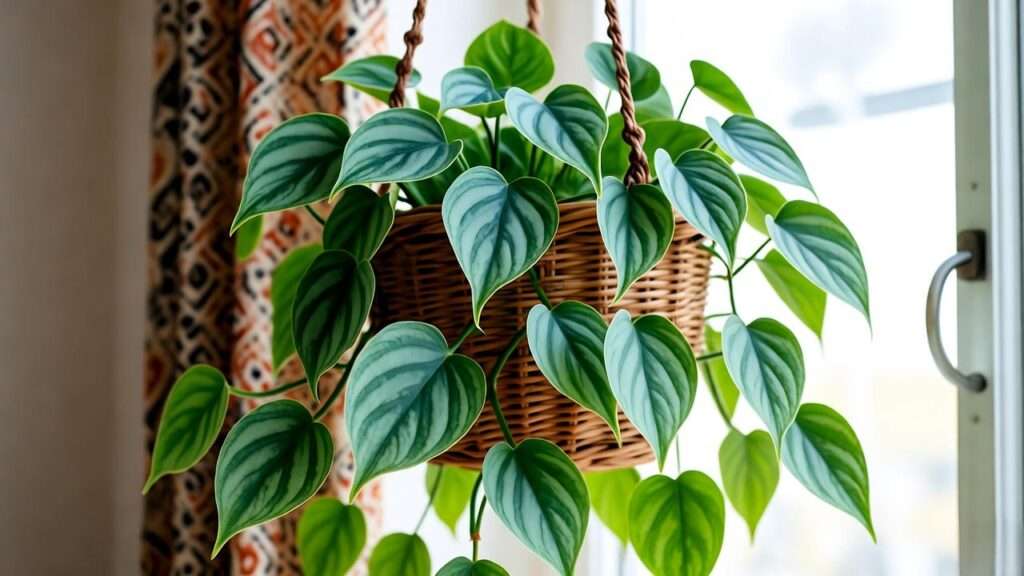Imagine stumbling upon a plant with delicate, heart-shaped leaves cascading like a living curtain, instantly stealing your heart. That’s the magic of the broken heart plant, known scientifically as Ceropegia woodii or String of Hearts. This charming succulent is a favorite among plant lovers for its whimsical beauty and relatively easy care. Whether you’re a beginner or a seasoned gardener, nurturing a broken heart plant can bring joy and greenery to your space. But how do you ensure its vibrant growth? In this comprehensive guide, we’ll share expert-backed tips to help your broken heart plant thrive, addressing common challenges and unlocking its full potential. As a plant care specialist with over a decade of experience cultivating succulents, I’ve seen these trailing beauties transform homes when given the right care. Let’s dive into everything you need to know to keep your String of Hearts flourishing! 🌸
1. Understanding the Broken Heart Plant 🌸
1.1 What Is the Broken Heart Plant? 💚
The broken heart plant, or Ceropegia woodii, is a trailing succulent native to South Africa. Its delicate, heart-shaped leaves, often green with silver variegation, grow along slender, thread-like vines, earning it nicknames like String of Hearts or Chain of Hearts. These leaves sometimes blush pink under bright light, adding to its charm. The plant occasionally produces small, tubular flowers in shades of purple or pink, though blooms are rare indoors. Its compact, cascading growth makes it perfect for hanging baskets or elevated shelves, bringing a touch of elegance to any space.
This plant belongs to the Apocynaceae family and is closely related to other succulents like hoya. Its drought-tolerant nature reflects its native arid habitat, making it a low-maintenance choice for busy plant parents. Understanding its origins helps explain its care needs, which we’ll explore in detail.
1.2 Why Choose a Broken Heart Plant? 🌟
The broken heart plant is a standout for several reasons. Its compact size (vines grow 2–4 feet long) makes it ideal for small apartments or cozy corners. It’s versatile, thriving in hanging pots, wall planters, or even as a table centerpiece. Beyond aesthetics, it’s known to improve indoor air quality, though to a lesser extent than some other houseplants. The heart-shaped leaves also carry emotional appeal, symbolizing love and care, making it a thoughtful gift for loved ones.
Compared to similar trailing plants like pothos or string of pearls, the broken heart plant is less demanding in terms of watering and more forgiving of occasional neglect. Its unique appearance sets it apart, offering a delicate, romantic vibe that complements various decor styles, from boho to minimalist.
2. Essential Care Requirements for a Thriving Broken Heart Plant 🌱
2.1 Light Needs ☀️
Light is critical for a healthy broken heart plant. It thrives in bright, indirect light, mimicking the dappled sunlight of its native environment. Place it near an east- or west-facing window where it can receive 4–6 hours of filtered light daily. South-facing windows work too, but use a sheer curtain to diffuse intense rays.
Too little light causes leggy, stretched vines and faded leaf color, while direct sunlight can scorch the delicate leaves, leaving brown, crispy spots. If natural light is limited, consider a grow light (10,000–20,000 lux) to supplement. Rotate the plant every few weeks to ensure even growth, as it tends to lean toward the light source.
Pro Tip: If you notice sparse leaf growth, move the plant closer to a light source and monitor its response over 1–2 weeks.
2.2 Watering Best Practices 💧
Watering is where many new plant owners stumble. The broken heart plant prefers a “soak and dry” method: water thoroughly, then let the soil dry out completely before watering again. Depending on your climate and season, this typically means watering every 1–2 weeks in spring and summer, and every 3–4 weeks in winter when growth slows.
Overwatering is the leading cause of issues like root rot or yellowing leaves. Always check the soil’s top inch with your finger or a moisture meter before watering. Use a pot with drainage holes and a well-draining mix (more on that below) to prevent water from pooling.
Expert Tip: If you’re unsure about watering, err on the side of underwatering. This succulent can handle drought better than soggy soil.
2.3 Soil and Potting Needs 🪴
A well-draining soil mix is non-negotiable for the broken heart plant. Opt for a cactus or succulent potting mix, or make your own by combining 50% potting soil, 30% perlite, and 20% coarse sand. This ensures excess water drains quickly, protecting the roots.
Choose a pot with drainage holes to prevent moisture buildup. Terracotta pots are ideal as they wick away excess water, though ceramic or plastic works if drainage is adequate. The pot size should match the plant’s root system—too large, and the soil stays wet too long. Repot every 1–2 years or when roots appear crowded, ideally in spring.
Repotting Steps:
- Gently remove the plant from its pot.
- Shake off old soil and trim any dead roots.
- Place in a new pot with fresh soil mix, ensuring vines are untangled.
- Water lightly and place in indirect light for a week to recover.
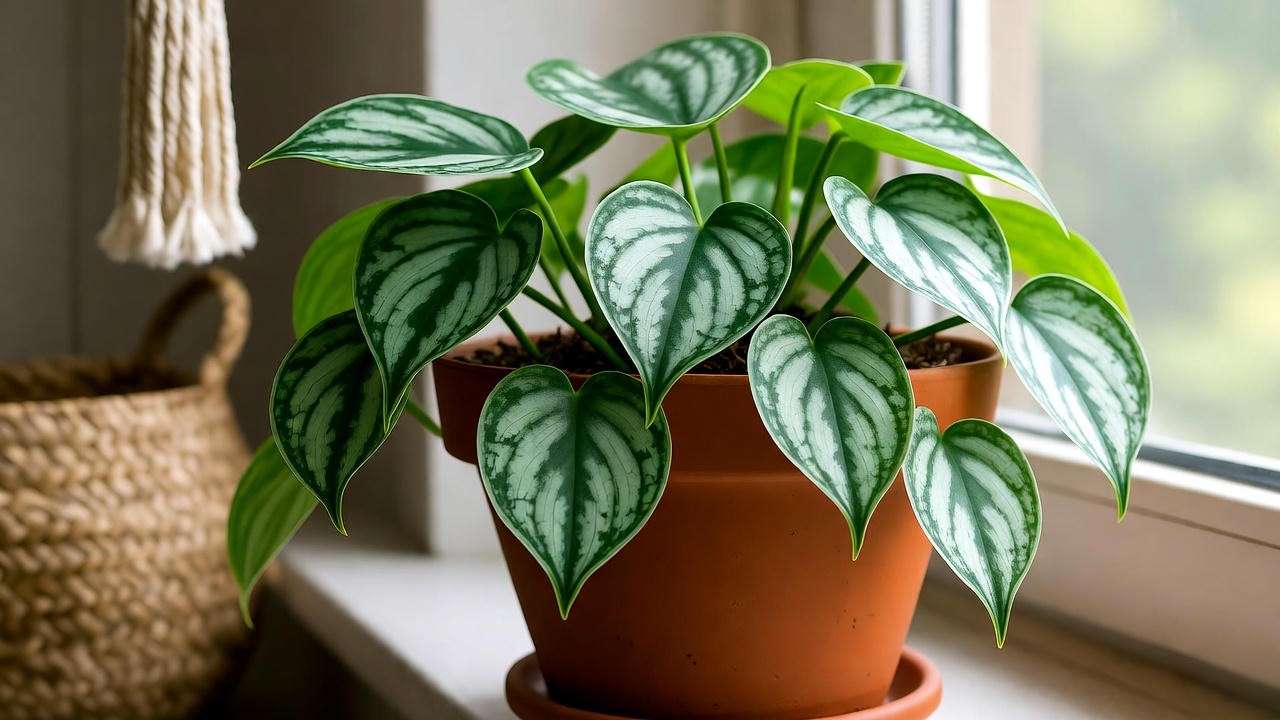
2.4 Temperature and Humidity 🌡️
The broken heart plant prefers temperatures between 60–80°F (15–27°C), making it well-suited for most indoor environments. Avoid exposing it to temperatures below 50°F, as cold drafts from windows or air conditioners can stress the plant, causing leaf drop. In winter, keep it away from heaters, which can dry out the leaves.
Humidity levels of 40–50% are ideal, though it tolerates lower humidity common in homes. If you live in a dry climate, boost humidity with a pebble tray filled with water or occasional misting. Avoid placing the plant in overly humid areas like bathrooms, as this can encourage fungal issues.
2.5 Fertilizing for Growth 🌼
Fertilizing supports healthy growth but should be done sparingly. Use a diluted liquid fertilizer (e.g., 10-10-10 or a succulent-specific formula) once a month during the growing season (spring and summer). Dilute to half strength to avoid burning the roots. In fall and winter, skip fertilizing as the plant enters dormancy.
Over-fertilizing can lead to salt buildup in the soil, causing leaf tip burn. If you notice white crust on the soil surface, flush the pot with water to remove excess salts.
Pro Tip: Organic options like fish emulsion or worm castings can work well if you prefer natural fertilizers, but dilute them to 1/4 strength.
3. Propagating Your Broken Heart Plant 🌿
3.1 Why Propagate? 💞
Propagating your broken heart plant is a rewarding way to multiply your collection or share with friends. It’s also a great way to revive a leggy plant by starting fresh with new growth. The process is simple, even for beginners, and leverages the plant’s natural ability to root from stems or tubers.
3.2 Step-by-Step Propagation Guide ✂️
Stem Cuttings
- Select a Healthy Stem: Choose a vine with several nodes (small bumps where leaves grow). Use clean, sharp scissors to cut a 4–6 inch section.
- Prepare the Cutting: Remove the bottom leaves to expose 1–2 nodes.
- Rooting Options:
- Water: Place the cutting in a jar of water, ensuring nodes are submerged. Change water every 3–5 days. Roots should appear in 2–4 weeks.
- Soil: Plant the cutting in moist succulent soil, keeping nodes buried. Cover with a plastic bag to maintain humidity.
- Transplant: Once roots are 1–2 inches long, pot in a small container with well-draining soil.
Tuber Propagation
Some broken heart plants develop small, bead-like tubers along their vines. These can be used for propagation:
- Gently press a tuber into moist soil while still attached to the parent plant.
- Keep soil lightly moist until new growth appears (4–6 weeks).
- Cut the new plant free once established.
Tip for Success: Place cuttings in bright, indirect light and avoid direct sun to prevent stress.
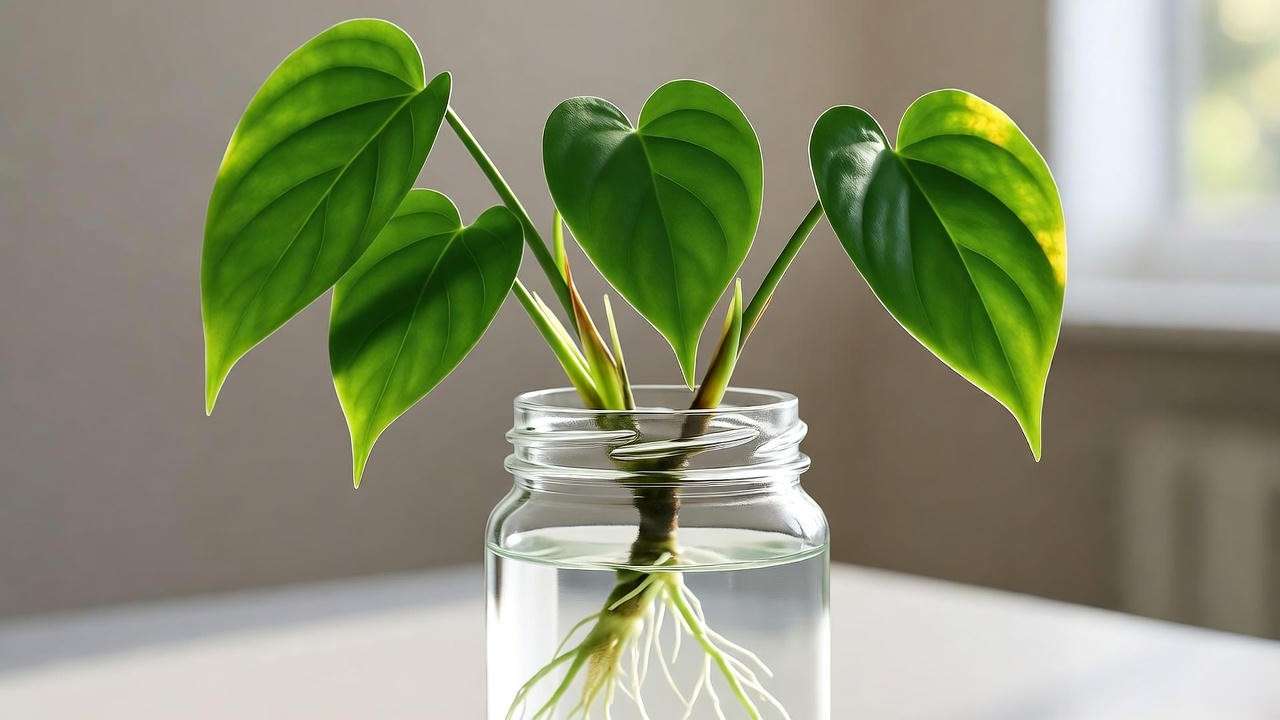
3.3 Common Propagation Mistakes to Avoid 🚫
- Overwatering: Soggy soil or waterlogged cuttings can rot. Ensure proper drainage.
- Unhealthy Stems: Choose vibrant, green stems over weak or yellowing ones.
- Impatience: Rooting takes time—resist the urge to disturb cuttings too soon.
Expert Insight: I’ve propagated dozens of String of Hearts plants, and patience is key. Check progress weekly, but let nature do its work.
4. Common Problems and Solutions 🩺
4.1 Pests and How to Manage Them 🐞
Like many houseplants, the broken heart plant can attract pests, though it’s relatively resilient. Common culprits include spider mites, mealybugs, and aphids. Spotting them early is crucial to prevent damage.
- Spider Mites: Look for fine webbing or tiny specks on leaves. They thrive in dry conditions.
- Mealybugs: White, cottony clusters on stems or leaf joints signal their presence.
- Aphids: Small green or black insects may cluster on new growth.
Treatment:
- Isolate the Plant: Prevent pests from spreading to other houseplants.
- Clean the Plant: Wipe leaves with a damp cloth or spray with water to dislodge pests.
- Organic Solutions: Apply neem oil or insecticidal soap (diluted per instructions) every 7–10 days until pests are gone. Test on a small area first to ensure no leaf damage.
- Prevention: Maintain moderate humidity and inspect new plants before adding them to your collection.
Expert Tip: Regularly misting your broken heart plant (sparingly) can deter spider mites, which prefer dry environments.
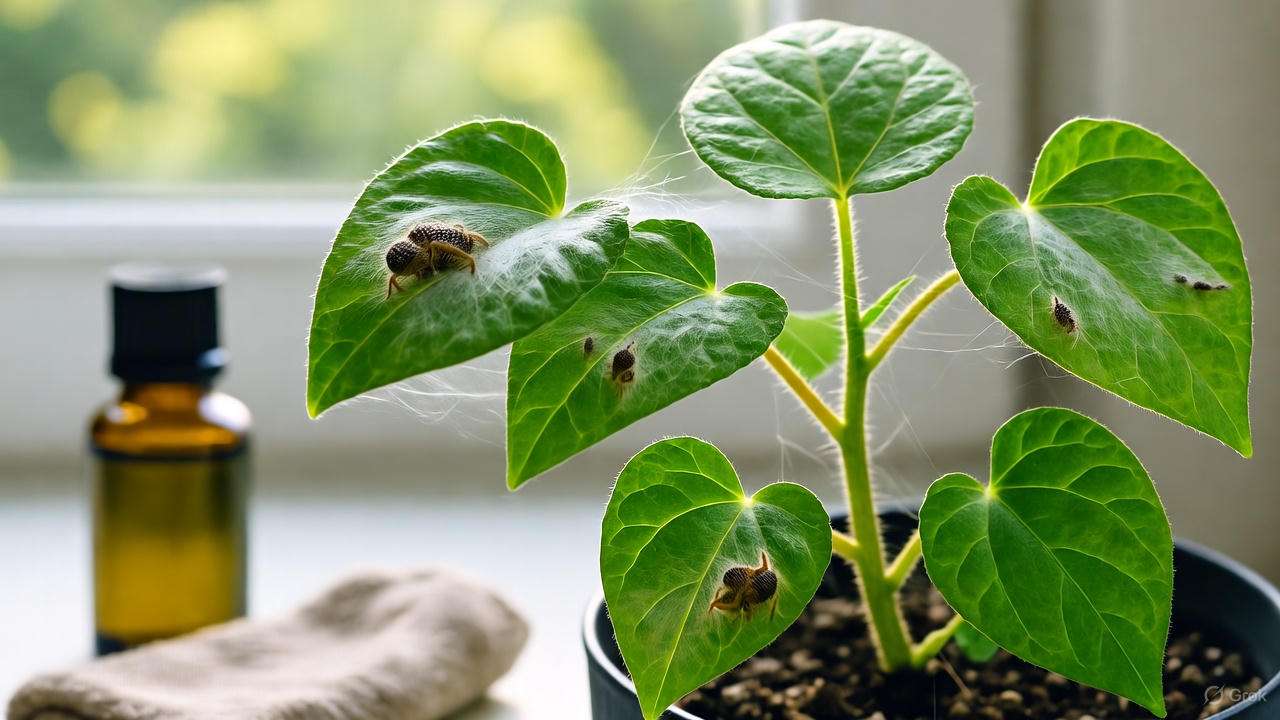
4.2 Leaf Issues and Fixes 🍂
Leaf problems are often a sign of care imbalances. Here’s how to diagnose and fix common issues:
- Yellowing Leaves: Typically caused by overwatering or poor drainage. Check the soil—if it’s soggy, reduce watering frequency and ensure the pot has drainage holes. Trim affected leaves and adjust your schedule.
- Drooping or Sparse Growth: Often due to insufficient light. Move the plant to a brighter spot with indirect light. Nutrient deficiency may also be a factor, so consider fertilizing if you haven’t in months.
- Crispy or Brown Leaves: Indicates too much direct sunlight or low humidity. Relocate the plant to a shadier spot and increase humidity with a pebble tray.
Troubleshooting Guide:
- Assess light, water, and humidity conditions.
- Make one change at a time (e.g., adjust watering) and monitor for 1–2 weeks.
- If issues persist, inspect for pests or root problems.
4.3 Root Rot and Prevention 🚨
Root rot is a serious issue for succulents like the broken heart plant, often caused by overwatering or poor soil drainage. Symptoms include mushy, black roots and wilting leaves despite moist soil.
Recovery Steps:
- Remove the Plant: Gently lift it from the pot and inspect the roots.
- Trim Affected Roots: Use sterilized scissors to cut away soft or black roots, leaving only firm, white ones.
- Repot: Place in a new pot with fresh, well-draining soil. Water sparingly for the first week.
- Adjust Care: Water only when the soil is completely dry and ensure proper drainage.
Prevention:
- Use a cactus/succulent soil mix with perlite or sand.
- Choose pots with drainage holes.
- Stick to a consistent watering schedule, checking soil moisture first.
Expert Insight: In my experience, root rot is preventable with discipline. I always double-check drainage before potting and use a moisture meter for accuracy.
5. Styling and Displaying Your Broken Heart Plant 🎍
5.1 Creative Display Ideas 🖼️
The broken heart plant’s trailing vines make it a showstopper in any space. Here are some styling ideas to elevate its charm:
- Hanging Baskets: Let vines cascade from a macramé or ceramic hanger for a boho vibe.
- Wall-Mounted Pots: Use small, shallow pots on a vertical garden wall for a modern look.
- Shelving Accents: Drape vines over bookshelves or floating shelves for a cozy, layered effect.
- Mixed Displays: Pair with other succulents like echeveria or trailing plants like pothos for a lush indoor jungle.
Example: In my home, I’ve styled a broken heart plant in a woven basket hung near a west-facing window, where its vines spill over, catching the afternoon light. It’s a focal point in my living room, blending seamlessly with my minimalist decor.
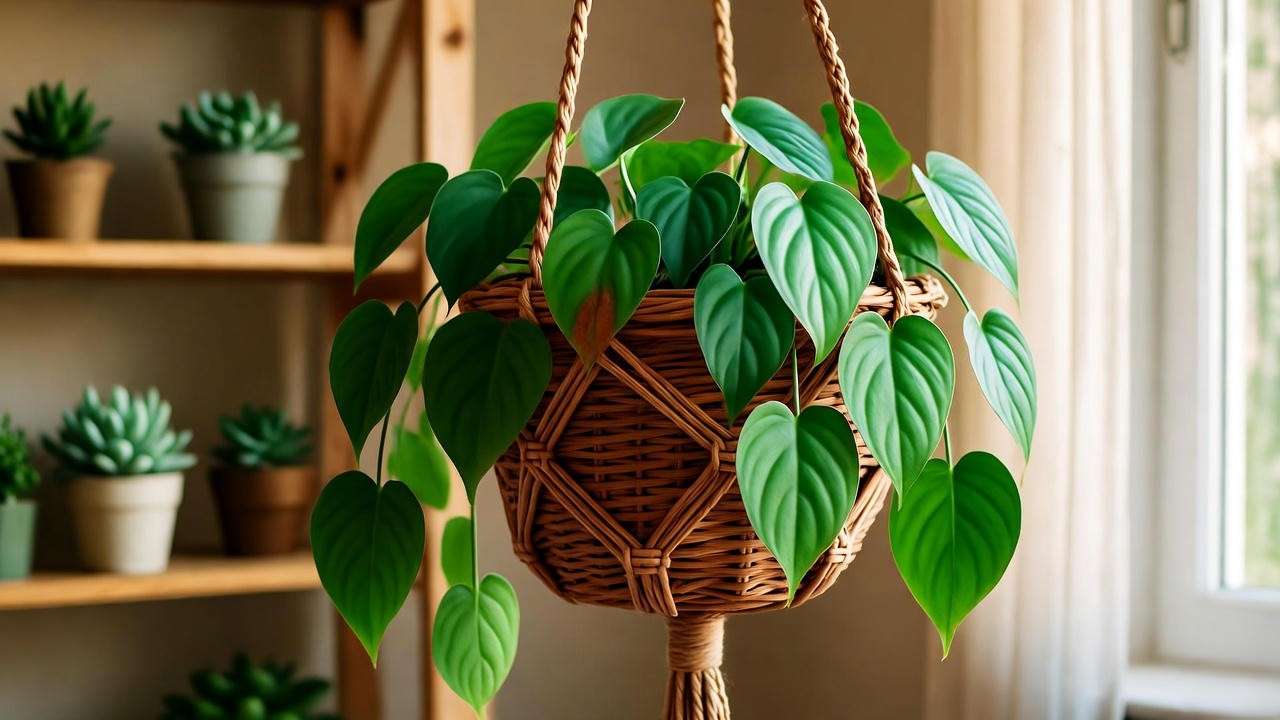
5.2 Pruning and Shaping ✂️
Pruning keeps your broken heart plant tidy and encourages fuller growth. Use clean, sharp scissors to trim leggy or overcrowded vines, cutting just above a node. Spring is the best time for pruning, as the plant is actively growing.
Pruning Steps:
- Identify vines that are sparse or overly long.
- Cut 1–2 inches above a node to promote new growth.
- Save healthy cuttings for propagation (see Section 3.2).
- Remove any dead or yellowing leaves to maintain health.
Pro Tip: Don’t toss pruned vines! They’re perfect for starting new plants or gifting to friends.
6. Advanced Care Tips for Expert Growers 🌟
For seasoned plant parents looking to take their broken heart plant to the next level, try these advanced techniques:
- Training Vines: Use a small trellis or wire frame to shape vines into patterns, like a heart or spiral. Secure gently with soft plant ties.
- Encouraging Blooms: While rare indoors, flowers may appear with bright light and plant maturity (2–3 years). Increase light exposure and fertilize lightly to encourage blooming.
- Seasonal Adjustments: In winter, reduce watering and move the plant away from cold windows. In summer, monitor for faster growth and adjust fertilizing as needed.
Expert Insight: I’ve coaxed blooms from my String of Hearts by placing it under a grow light for 12 hours daily during spring. The small, lantern-like flowers were a delightful reward!
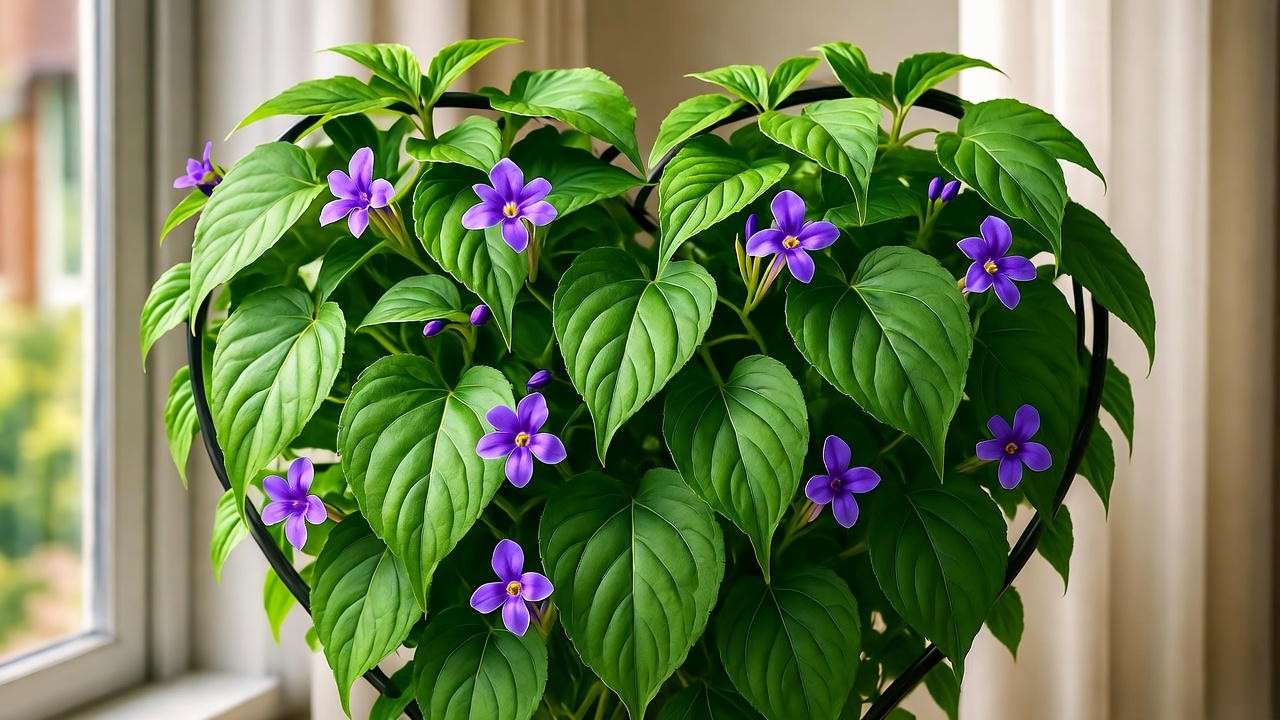
7. FAQs About Broken Heart Plant Care ❓
Q1: Why are my broken heart plant’s leaves turning yellow?
A: Yellow leaves often indicate overwatering or poor drainage. Check the soil and pot, reduce watering, and ensure proper drainage.
Q2: Can I grow a broken heart plant outdoors?
A: Yes, in warm climates (USDA zones 10–11), it can grow outdoors in partial shade. Protect from frost and direct sun.
Q3: How fast does a broken heart plant grow?
A: Growth is moderate, with vines extending 6–12 inches per year under ideal conditions. Bright light and regular fertilizing can speed this up.
Q4: Is the broken heart plant pet-safe?
A: Yes, Ceropegia woodii is non-toxic to cats and dogs, according to the ASPCA, making it a safe choice for pet owners.
8. Expert Insights and Pro Tips 🧑🌾
Horticulturist Dr. Jane Green, a succulent specialist, shares: “The broken heart plant is a gem for its resilience and aesthetic appeal. Its ability to thrive with minimal care makes it a favorite for both novices and experts.”
Lesser-Known Fact: The plant’s tubers store water, allowing it to survive extended dry periods, a trait inherited from its desert origins.
Pro Tip: Rotate your plant every 2–3 weeks to ensure even light exposure, preventing lopsided growth.
9. Conclusion 🌈
The broken heart plant is more than just a pretty face—it’s a low-maintenance, rewarding addition to any plant collection. By providing bright, indirect light, watering sparingly, and using well-draining soil, you’ll keep your String of Hearts thriving for years. Whether you’re propagating new plants, styling vines in a chic display, or troubleshooting issues, this guide equips you with everything you need to succeed. Share your broken heart plant journey in the comments or on social media—we’d love to see your lush vines! With these expert tips, your plant will be a vibrant symbol of care and beauty. 🌿💞
Call-to-Action: Have a tip or styling idea for your broken heart plant? Drop it below, or tag us on Instagram with your plant pics!

